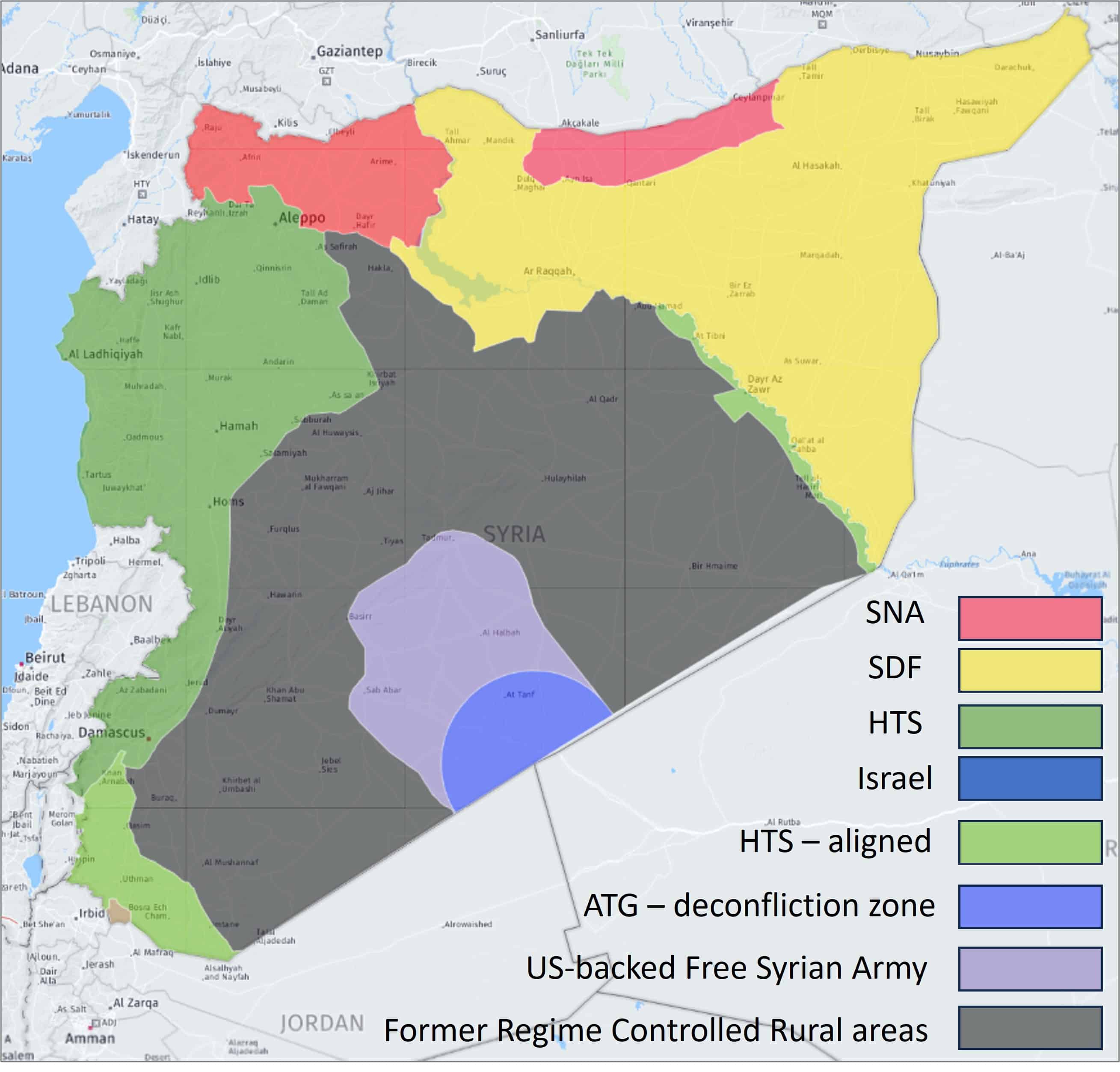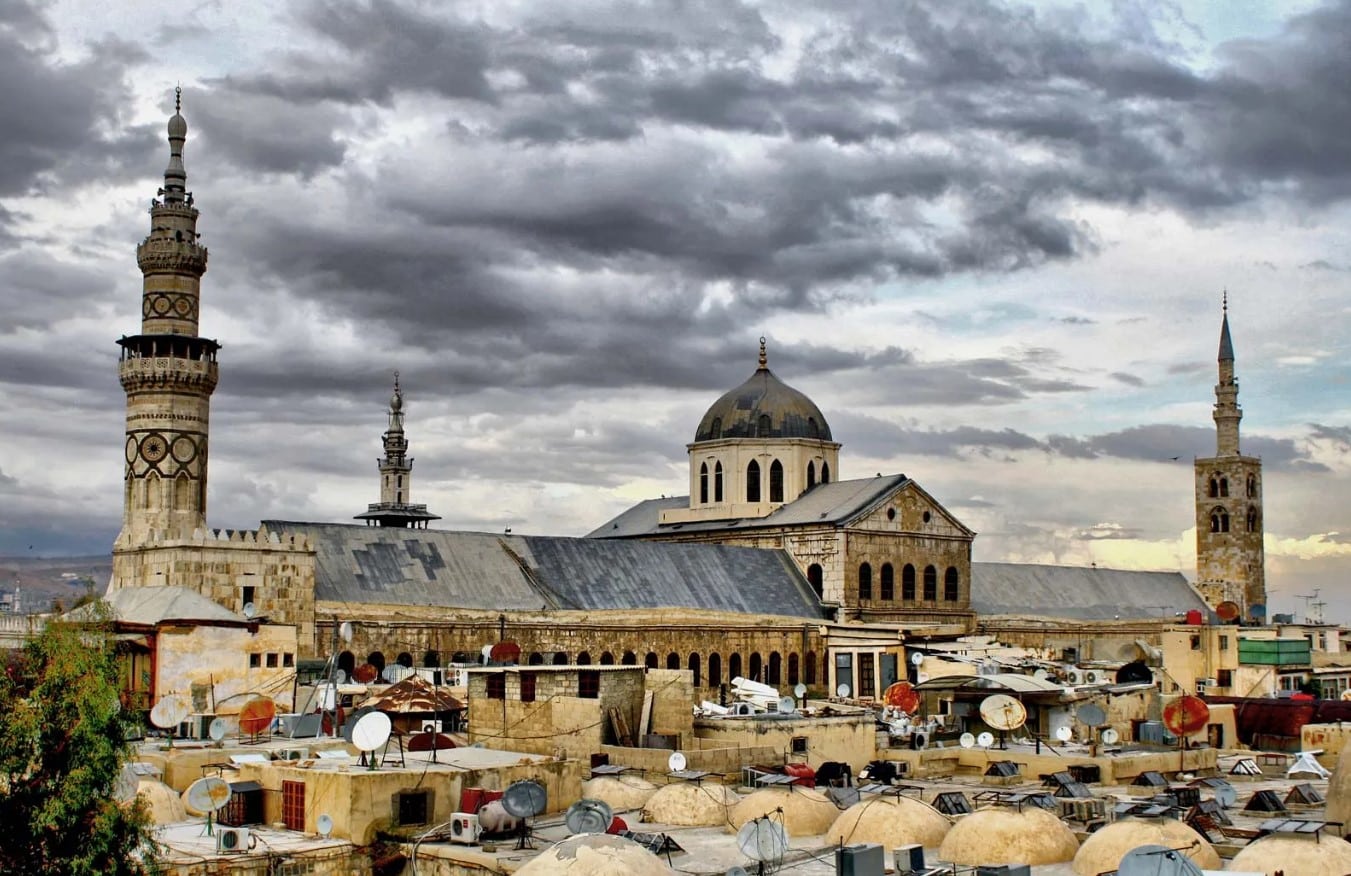Weekly Incident Map
Dear subscriber. Welcome to the Syria Weekly Report – a brand-new reporting service launched by Talos that provides high-quality information and analysis on Syria. The report is focused on broader strategic and political developments in the country, as well as Syria’s relations to regional stakeholders and surrounding countries. The report is disseminated every wednesday and is complemented by a daily report.
The service will be provided for our existing subscribers for free for a limited time period and then offered as a separate, stand-alone product outside your regular subscription. For inquiries regarding prices for a subscription, or the availability of bespoke reporting on Syria – including in-depth reports, risk assessments and incident data – please email [email protected]. Please also contact us if you are interested in transportation or other security services in Syria. In the meantime, please enjoy this complimentary service.
Executive Summary
-
Minority groups demand amendments to constitutional declaration
-
SDF commander met with interim government committee
-
US shifts position on sanctions relief for Syria
-
Israel escalates operations near Koya in Daraa province
-
Lebanon and Syria reach agreement on border security ahead of meeting
Interim government announced a constitutional declaration
Domestic political developments were characterized by the fallout of the constitutional declaration announced by the interim government last week. To recall, the declaration was praised as a step forward in the political transition and called for elections to be held within five years, but also contained provisions and stipulations perceived as exclusionary and discriminatory by minority groups. This included most notably the identification of Syria as an “Arab Republic” ruled by a “Muslim president” – a legacy article from the previous constitution that seemed to alienate the country’s Kurdish, Druze, Christian and other religious and ethnic minorities.
Kurdish factions were quick to denounce the declaration and on 21 March, several ruling parties in the north and east Syrian – including the Syrian Democratic Forces (SDF), Democratic Union Party (PYD) and the Kurdish National Council (KNC) – submitted a list of demands on 21 March calling for amendments to the draft constitution. Details of the demands to be submitted to Damascus remain limited, but anonymous sources claimed this included a political system based on “federalism” – a structure that the interim government has consistently rejected in favor of a more centralized system. A spokesperson for the KNC reiterated that the Kurdish parties all want “a decentralized, federal, multi-ethnic, and multi-religious Syria.”
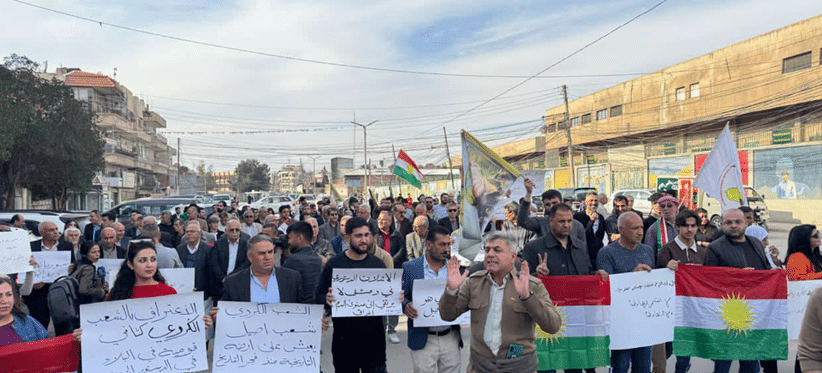
Protesters in Qamishli denounce constitutional declaration
Days later, more than thirty parties and factions representing a wide range of ethnic and religious minority groups formed an alliance aimed to unify political efforts to amend the constitution. The so-called Syrian Equal Citizenship Alliance (Tamasuk) includes 34 parties and civil groups, including Kurdish, Druze, Christian and other components. The alliance called for a new constitution to be written based on a recognition of Syria’s religious and ethnic plurality. Crucially, the alliance also calls for the decentralization of powers and a constitution that enshrines greater levels of regional autonomy and self-determination.
To recall, the last point (regarding decentralization) has been another source of criticism against the constitutional declaration which advocated a highly centralized power structure and affords the president strong executive powers. Another source of contention is the manner in which the constitution was written, with Kurdish and other minority factions criticizing the exclusion of non-Arab elements in the constitutional committee responsible for drafting the declaration and the lack of external consultations in the drafting process.
Whether the formation of the alliance will have any significant impact on the constitutional process remains to be seen, but the majority of the groups involved in the alliance are assessed to lack the political power to exercise any real leverage. The main exception is arguably the SDC which will likely remain at the forefront of efforts to amend the constitution following the SDF’s agreement with Damascus. The alliance will also likely focus its efforts on shaping international opinions on the matter and bringing attention to perceived injustices that may affect the interim government’s efforts to obtain sanctions relief.
Crucially, associated tensions are not showing any signs of transpiring into hostilities and violence, but demonstrations linked to the issue are expected to continue. This week, multiple demonstrations were recorded across the northeastern provinces, as well as in Druze-dominated areas of the south, to denounce the declaration. These protests have not been met with any significant pushback by the interim security forces, but over time these issues may well translate into hostilities that could impact broader security dynamics in the country.
SDF commander met with interim government committee
In a related development, efforts to implement the agreement to integrate the SDF into the new military and administrative structures of the interim government continued this week. On 19 March, the SDF Commander Mazloum Abdi met with members of the committee set up by the government to oversee the implementation of the deal. The meeting did not result in any significant new developments but is assessed to have laid the groundwork for commencing the process. A statement by the SDF said the meeting focused on planning the work of the various committees set up to execute aspects of the deal, which is expected to commence in April.
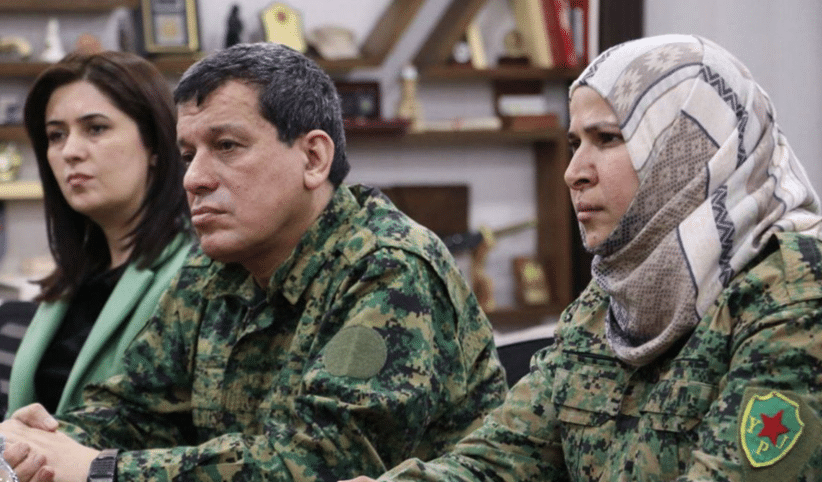
SDF Commander Mazloum Abdi
To recall, the agreement made between the two sides stipulated the military and administrative integration of the SDF into Syria’s state institutions, but details of how this will be conducted in practice remain unclear. Both sides have agreed to form several “joint committees” to oversee its implementation, but SDF officials have stressed that several issues remain to be resolved in practice. For their part, the government said the deal would be applied “before the end of the year”, indicating that the process will most likely be protracted. Commenting on the agreement on 25 March, UN Special Envoy Geir Pedersen expressed optimism over the deal and said “We have seen progress in the dialogue.” The envoy added that both sides have “demonstrated willingness to negotiate and implement confidence-building measures”, but that challenges remain without specifying. The extent to which the UN and other international stakeholders – including the US – will be involved in forthcoming discussions remains unclear, but the West has broadly expressed support for the integration efforts.
US shifts position on sanctions relief for Syria
In another significant political development this week, the US signaled a potential willingness to lift sanctions on the interim government. Speaking at her weekly press conference, State Department Spokesperson Tammy Bruce indicated that the Trump administration may facilitate financial transfers in the future, pending the actions and activities of the interim government. Bruce clarified however that the US does not intend to lift sanctions on the country but that it continues to monitor activities in Syria. Days later, a report by Reuters – citing anonymous officials – stated that the US provided the interim government with a list of conditions that would result in partial sanctions relief. The list was reportedly submitted by U.S. Deputy Assistant Secretary for the Levant and Syria Natasha Franceschi to Foreign Minister Assad al-Shaibani on the sidelines of the Syrian donor conference organized by the EU on 18 March.
The same report, citing six sources familiar with the matter, including US, Syrian and a “regional” diplomat, said the conditions include the destruction of any remaining chemical weapons stores as well as cooperation on “counter-terrorism.” The list also includes a demand to remove any foreign fighters from senior leadership positions within the government, and to ensure that this does not occur in the future. In exchange for meeting the demands, the US is reportedly willing to extend a current exemption that allows limited transactions with government entities for another two years, as well as the possible addition of further exceptions that would facilitate economic transactions. The US would also issue a statement expressing support for Syria’s territorial integrity.
Of note, the list was reportedly submitted prior to the comments made by Bruce yet the decision to leak the report surrounding the list to the media suggests a deliberate effort by the Trump administration to engage with the interim government. At the very least, this represents an effort to gauge the reactions from Damascus and explore what conditions, if any, the interim government is willing to make towards the US. Unlike its European partners, Washington remains very reluctant to formalize any relations with the new government and stands firm in its concerns over the HTS’ jihadist historical links and the presence of foreign elements within its senior ranks.
The rhetoric this week also comes ahead of a potential cabinet reshuffle by President Ahmed al-Sharaa who on 25 March signaled that the new government would comprise 22 ministerial portfolios mainly comprising “newcomers.” This suggests that the majority of the current 22 positions, including that of Prime Minister Muhammed al-Bashir, will most likely be replaced. To recall, the current government is predominantly made up of long-standing HTS members with long and strong ties to al-Sharaa, and who served in key leadership and administrative positions in Idlib province. The composition of the new government is expected to be announced in the coming days, and will most certainly be closely monitored by the US and other Western partners.
Israel escalates operations near Koya in Daraa province
The US’ relationship with the new government may however be further affected and complicated by the intensification this week of Israeli operations. Besides conducting regular airstrikes against former regime capabilities, clashes escalated in the Yarmouk Basin area of Daraa province – located in the triangle between Jordan and the Golan Heights. The clashes on 25 March killed at least five civilians according to local and Syrian state-linked sources, as Israeli forces conducted artillery strikes to support ground engagements with what the Israeli Defence Forces (IDF) called several “terrorists”. The sequence of events and what triggered the escalation differ based on conflicting political narratives but the IDF stated that its forces identified and engaged several “terrorists” in the area who posed a threat to Israeli security forces, with the subsequent operation successfully neutralizing the threat. For their part, Syrian state-linked sources stated that the IDF “penetrated the town following reconnaissance flights” and then proceeded to “bomb” the village, with artillery shells fired by tanks targeting civilian residences.
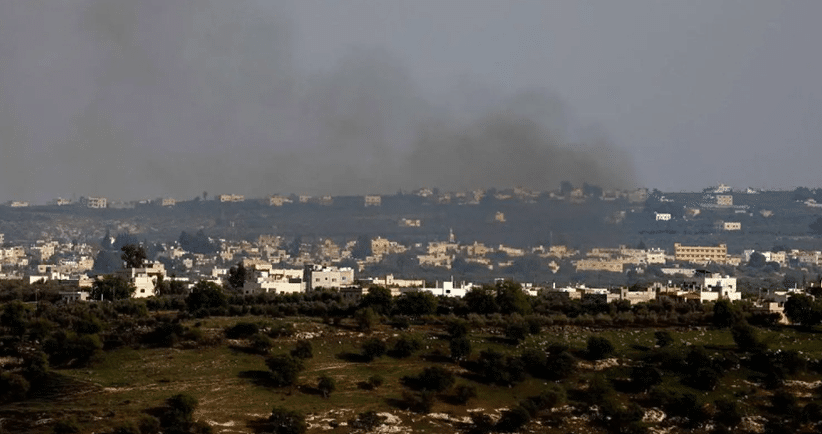
Smoke seen during Israeli targeting of Koya village in Daraa province
The escalation stands out as one of the most significant since the Israeli incursion into the area which is located approximately 1.5 kilometers from the border of the Israeli-occupied areas of the Golan Heights. As regularly discussed, tensions in the area have been consistently elevated, with localized clashes and tensions reported, yet the fatality rate of the clashes on 25 March forms a deviation from previous engagements. The reactions to the clashes have been significant, and the Syrian Foreign Ministry immediately condemned the Israeli action and called on the international community to intervene. Similarly, several regional allies – including Qatar, Saudi Arabi and the Gulf Cooperation Council (GCC) denounced the Israeli “aggression” as unacceptable and reiterated calls on Israel to remove its troops.
The situation in the local area is expected to remain tense but protests and other popular reactions in other parts of the country are also expected over the coming days. Earlier in February, tensions and popular sentiments flared after Israeli officials reiterated their intent to maintain a presence in southern Syria and ruled out removing any troops given the presence of armed groups that threaten Israel. This provoked nationwide protests while complicating tensions with Israeli-linked elements of the Druze community that inhabit parts of southern Syria. A similar reaction to the engagement on 25 March cannot be ruled out, with protests against Israel and strong political reactions expected over the short to medium term.
Lebanon and Syria reach agreement on border security ahead of meeting
The fallout of last week’s escalation along the Lebanon-Syria border continued this week as both governments took steps to address security issues along the border. Further to the ceasefire agreement reached last week, Lebanese and Syrian officials announced this week that an agreement was reached between the Syrian and Lebanese Ministries of Defense regarding the withdrawal of both armies from the border village of Hawsh Sayyid Ali, facilitating the return of civilians. Both armies will maintain a presence on either side of the area, with an agreement that any breach by Hezbollah elements will be met with an appropriate response.
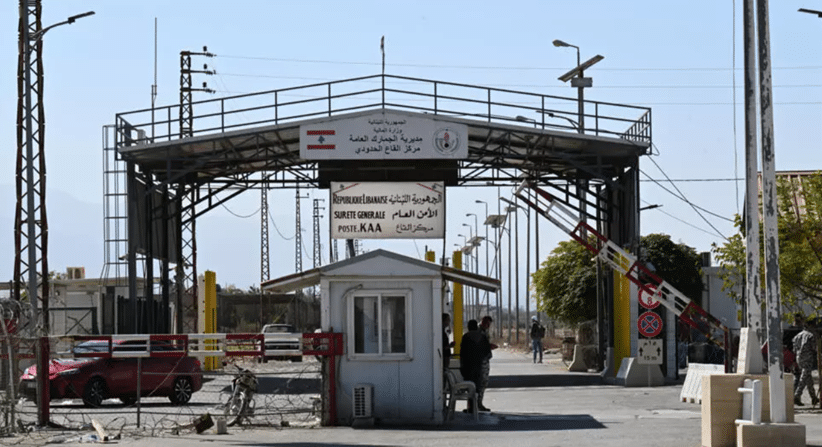
Lebanon proceeded to close illegal border crossings with Syria
Meanwhile, efforts to disrupt smuggling operations and illicit activity along the Lebanon-Syria border continued. The Lebanese Army announced the closure of six illegal crossings in the areas of Mashari’ al-Qaa, Hawsh Sayyed Ali, Qabash, and Hermel along the Syrian-Lebanese border. A statement by the army said the closures were part of efforts to combat smuggling and unauthorized border crossings. The army added that it had previously closed three other illegal crossings in the Al-Qaa area and the Mishrifeh and Dora-Hermel areas to tighten border control.
It is worth emphasizing that these are illegal border crossings traditionally used by Hezbollah-linked and other criminal elements to facilitate cross-border smuggling operations. The closures are not assessed to impact, or risk impacting, transportation or accessibility via official border crossings.
The issue of cross-border smuggling is set to gain further traction in the coming days as a Lebanese security delegation is scheduled to visit Damascus. On 24 March, media outlets reported that the delegation, led by Defense Minister Major General Michel Menassa, would travel to Damascus on 26 March for an official visit. As of writing, details of the meeting and its outcome have not been provided but the visit is in itself a positive indicator of bilateral efforts to address outstanding issues and reduce border tensions following the recent uptick in hostilities.
Control of Terrain Map – March 2025
